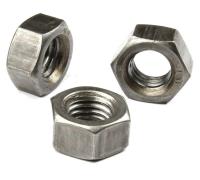 Add My Company
Add My Company
Sign In

Fixings and fastenings have always been a huge factor in engineering, installation and maintenance tasks carried out in the workplace, but they are also critical to the DIY sector, where perhaps knowledge and expertise is not quite so well-established. Home improvement has always been a big market as people enjoy the challenge of improving their homes themselves, and they also enjoy the cost savings involved, this is particularly the case during 2020 when people have experienced more time at home and lots of opportunities to look around and find a project to get stuck into. As a result, the area of fixings and fastenings has come under increasing scrutiny.fixings and fasteners
We can invest big money in home improvements, be it a new kitchen, a new decking installation for the garden or merely putting up a new swing for the kids or a TV bracket in the bedroom. These are all costly projects in terms of expense and time, so we don’t want to add more cost or waste valuable work by getting the little details wrong, and that means choosing the right fixings and fastenings.
What can go wrong with fixings and fastenings?
It is natural to pay most attention to your home improvement purchase and the added value it will bring to your home and everyday lives, but we need to pay equal attention to how these things are going to be installed, and more importantly fixed or fastened. Generally speaking, fixings and fastenings are a very minimal expense, but choosing them incorrectly can lead to excessive costs in repairs, replacements and damage. Every home improvement project is different of course, but in general, the selection of the wrong type of fixing or fastening can lead to:
Joints or pipework leaking or fixings becoming loose
A shorter lifespan for the product in question
Costly repairs or replacement
Poor or inferior performance of the product
The main issue is that the selection of the wrong fixing or fastening may not become immediately apparent. A certain type of screw may fasten a product securely in the first instance, but it quickly becomes loose or strained and in a couple of days you have a real problem and naturally, in some cases where heavy loads are involved, this can have dangerous and damaging consequences.
What factors do you need to consider when choosing fixings and fastenings?
In most cases, the first thing you need to consider when choosing your fixings and fastenings is exactly what you are wanting them to do. In this respect there are three things to consider:
The materials you are fixing
The tools required
The weight of the load you are fixing
Fixings and fastenings have different roles, of course you want them to fix an item in place, but different products can keep an item aligned, some can withstand natural torque or unwinding, some offer a failsafe security, whilst some are only appropriate for using with certain materials. A big size of screw doesn’t necessarily guarantee a bigger certainty of the item being fixed, for example, it will depend on the material you are fixing, the material you are fixing to, the weight of the material and the tools you are using.
Important factors in choosing the right fixing or fastener
There are three factors you need to consider when choosing the right fixings or fasteners and these all play an equally important role. You need the item you choose to guarantee:
Efficiency: You don’t want to rush the job, but you need the job to be done in a reasonable amount of time. Using the wrong fixing or fastener can result in you spending all day trying to secure something that just isn’t going to happen. This can be frustrating and lead to a lot of time getting nowhere or repairing what you have already done.
Durability: You need the fixing or fastener to do a quality job that is long-lasting and gives you peace of mind at both a job well done, but also one that will be secure for a long time. Only the right item and a quality-manufactured item will enable that.
Safety: You need the right item in order to guarantee your safety when carrying out the home improvement task and afterwards when enjoying it. This safety factor of course then extends beyond yourself to include your family and friends who use the house also.
How can wrong decisions on fixings and fastenings be made?
The short answer is, very easily. A screw for example could be 8mm in length or 10mm in length. They might both secure your item to a wall successfully, but the longer screw is likely to fix the load for longer and therefore more safely.
You may also have a job that is internal in the home but you use a galvanised screw. This secures the load perfectly well, but would look much better in appearance if the screw was stainless steel or mild steel. Likewise, a screw with a countersunk or flat head will sit flush to a surface when fully screwed in, and will look much better than a round-headed or hexagon-headed screw which will sit proud of a surface, even though both types of screw will adequately secure the load. In external situations, it won’t matter so much about appearance, so either screw could be used.
Finally, when securing two pieces of wood together, you could quite easily use a hexagon screw to make the fastening, but a proper wood screw would work much better. We will explain why in a moment.
Popular types of fixings and fastenings explained
There are many different types of fixings and fastenings which are very popular, and it is always worth getting some specialist advice to ensure you are buying and using the right item for the job you have in hand. But here is a brief introduction to some of the most popular types:
Nails – these are typically hammered into a material and hence are only used with woods and plastics. A nail is a more permanent fixing as it can be hard to remove.
Screws – these are fastened using a screwdriver and provide a better clamping force and because a screwdriver can provide reverse force, they are more easily removed as and when required. Screws come in many different forms, for example:
Wood screws – these are used for joining two pieces of wood and have a pointed end which ‘grabs’ the wood without cracking or splitting it, and hence these type of screws can’t be used with steel.
Hexagon screws – these are a popular and very versatile screw and can be used with a standard spanner or socket tool.
Socket screws – these are very useful in situations where you have very limited space and there is no room for an externally wrenched tool, they can be fastened using a small Allen key.
Security screws – these are screws which can only be removed using a specialist tool and hence are meant to be used where a permanent fastening is required.
When using screws it is important to consider the material you are attempting to fix to. For example, if you are screwing into masonry you should use a plastic rawl plug for the screw to fasten into, as this will provide more grip.
In all cases, when making a selection you should only proceed when you are confident you have the right fixing or fastener, so contact our sales experts and they can talk you through the project you are undertaking and the options you have to choose from.
For more information on THE IMPORTANCE OF THE RIGHT FIXING AND FASTENER talk to Kayfast Ltd
Enquire Now
List your company on FindTheNeedle.

